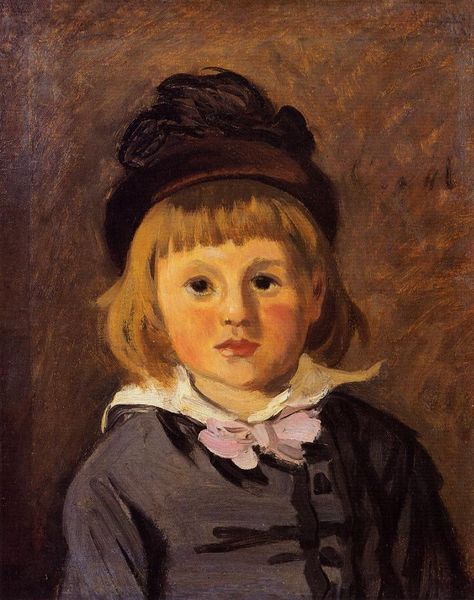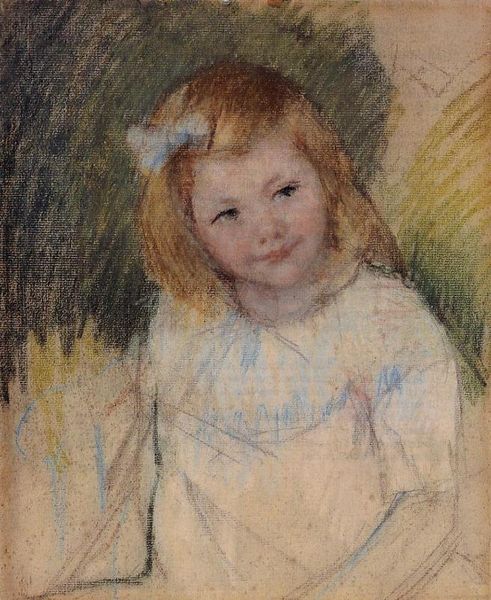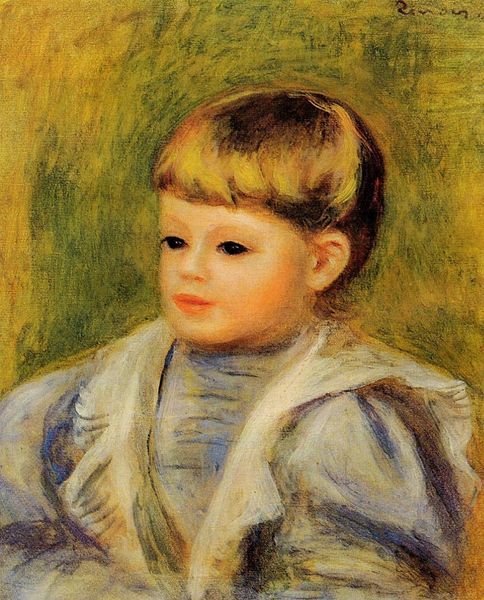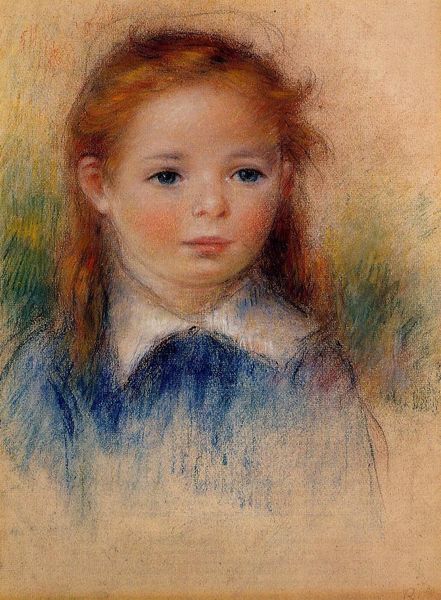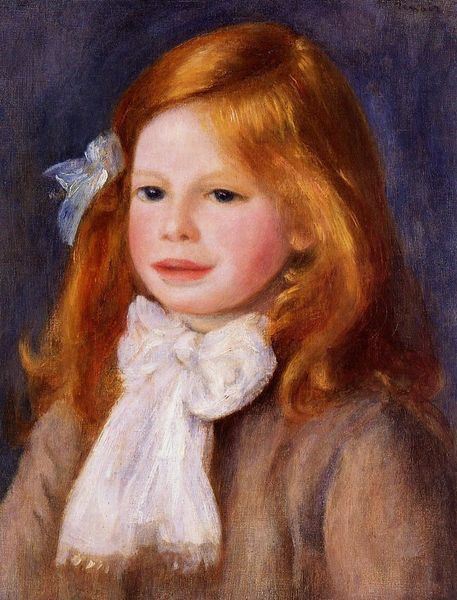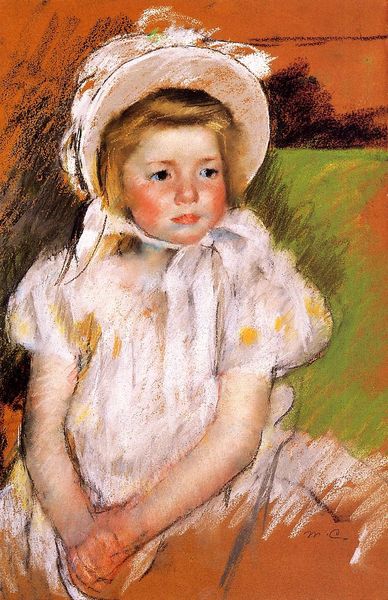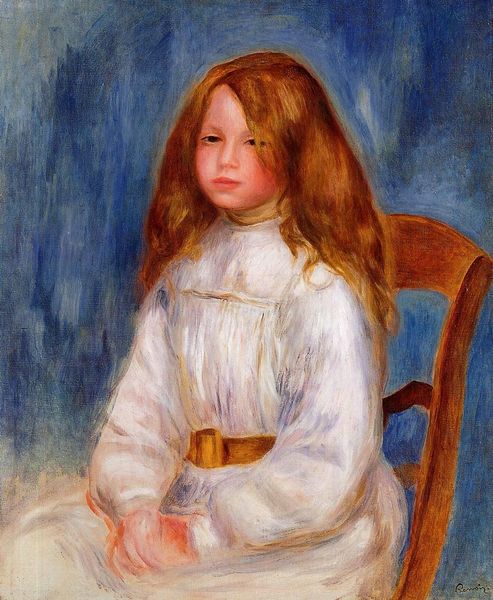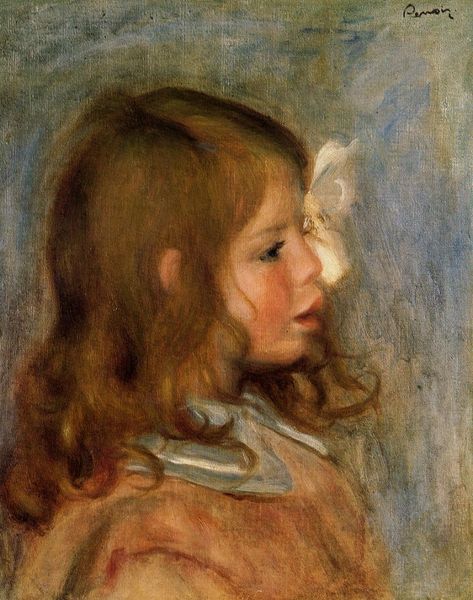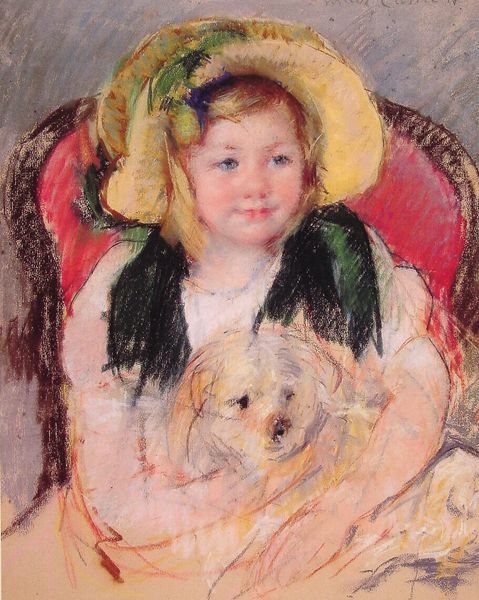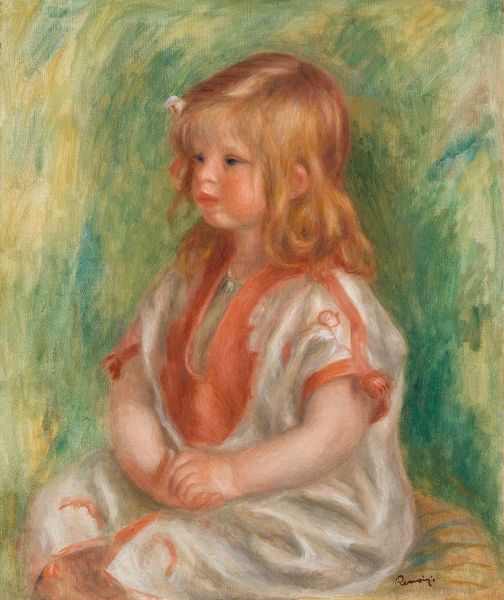
Copyright: Public domain
Curator: Looking at Renoir's "Mademoiselle Grimprel in a Blue Ribbon" from 1880, my immediate reaction is to marvel at its delicate application of oil paint. The soft brushstrokes almost dissolve the subject into pure light. Editor: The young Mademoiselle's slightly melancholic gaze and demure pose speaks volumes. In the context of late 19th-century bourgeois society, these childhood portraits were powerful statements of status and social aspiration. Curator: Exactly! Consider the materials and production involved. The cost of commissioning a Renoir portrait was a deliberate display of wealth and access, linking the Grimprel family to the rising class and associated luxury production. How the sitter appears tells us how people want to consume the image, not necessarily who that person is or wants to be. Editor: I agree it's about display, but it's also crucial to unpack the role gender plays here. These portraits, in representing childhood and particularly young women, were also about the limited agency of women in society at the time. Mademoiselle Grimprel, carefully adorned with ribbons, signifies innocence and future roles within patriarchal society. Her clothing is made to constrain not liberate. Curator: A sharp reading. I’m also interested in the very texture of the paint – its opaqueness in some areas and the almost translucent quality in others, it all evokes a certain atmosphere. He does capture this fleeting, ephemeral sense of childhood. The quickness of Impressionist brushwork mimics that of a fast fading memory or youth that ends so quickly and sometimes suddenly. Editor: That sense of ephemeral beauty contrasts sharply with the solid reality of social expectations bearing down on the young sitter. We’re talking about more than aesthetics here; it's a window into the historical moment, offering us questions about class and gender in late 19th-century France. Even though the child in the portrait will never see the final form of this painting. The material still tells its story to other future generations. Curator: A potent image from both perspectives. Editor: Precisely, layers to peel and reconsider continuously.
Comments
No comments
Be the first to comment and join the conversation on the ultimate creative platform.
